Results
-
£39.95
A Starry Night - Score and Parts - Joy Webb
Program NotesJoy Webb's A Starry Night was originally a huge success for The Salvation Army's 1960s pop phenomenon "The Joystrings." The breadth of the song's popularity continues to be a source of amazement to the writer herself, but the attractive simplicity and accessibility of the tune has made it one of the most widely used Christmas songs, particularly in schools and playgroups!Andrew Mackereth, who is the Bandmaster of the Salvation Army band at Nuneaton in Warwickshire and also conductor, composer and arranger for The Salvation Army Symphonic Wind Ensemble, has brought his considerable skills as an arranger and composer for both brand and concert band to this familiar Christmas song and produced an attractive dance-like Calypso-style setting that is already gaining huge popularity in its brass band form.This arrangement for concert band is sure to contribute to the ongoing popularity of this song, and will undoubtedly enhance any concert band's Christmas programme too.
Estimated dispatch 7-14 working days
-
£29.95
Share My Yoke - Score and Parts - Joy Webb
Program NotesMajor Joy Webb has a unique and special gift for writing songs that achieve massive popularity, both for the purity of their musical integrity and for the depth of their poetic and literal strength. One of the members of The Salvation Army's 1960s phenomenon "The Joystrings," Joy Webb has a string of popular songs to her name, several of which contributed to the charts successes of enjoyed by the group. In more recent years, many of her tunes have found their why into instrumental repertoire.A prime example of Joy's remarkable gifting is her beautiful Share My Yoke. Although the deeply spiritual words of Share My Yoke may be unfamiliar to some, the sheer beauty of the melody is without doubt. The chorus is reproduced here to offer an insight into the song's meaning:Your slightest movement I will feel and understand.Share my yoke, and come the way that I must go,In our togetherness my peace you'll know.The world beholding us will see it's so.Calling for real sensitivity both from soloist and accompanying group, this is an extremely rewarding piece to play - and a moving listening experience for the audience.The arranger, Ivor Bosanko, who lives in California following retirement from the post of Territorial Music Director in The Salvation Army's USA Western Territory, is himself a respected songwriter, composer and arranger. He has produced this wonderfully sensitive and evocative arrangement of the song for cornet soloist and band. Already widely used and recorded in its original brass band form, this arrangement for concert band will undoubtedly be a useful and valuable addition to repertoire.
Estimated dispatch 7-14 working days
-
 £96.00
£96.00With Wind and Water
With Wind and Wateris a musical portrayal of an adventure on the high seas during the sailing age. Large sailing vessels dominated global exploration, international trade, and naval warfare during the 16th to the mid-19th century.The piece's compound meter provides the pulse of movement as it pitches and rolls with the rhythm of the waves. The driving main melodies convey the determination and courage of the explorers and their crew. Dissonant harmonies suggest rough seas, turbulent weather, and other constant dangers that sailors must endure. Finally, the ending sweeping melody and climax reflects the joy and triumph at arriving on a new land at the apex of a long and intense voyage.
Estimated dispatch 12-14 working days
-
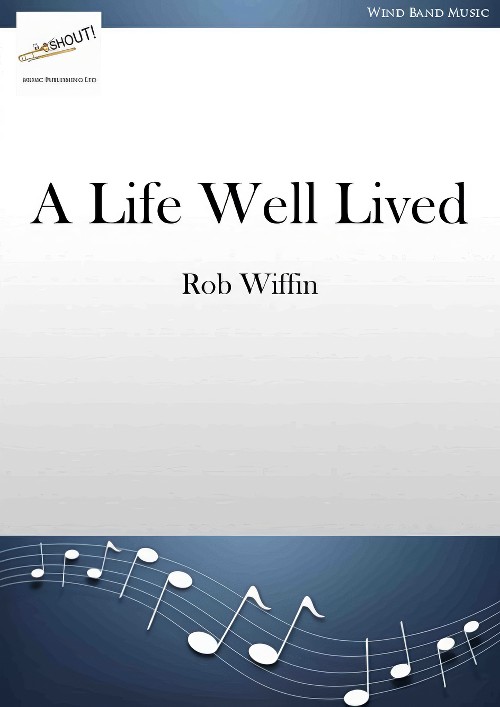 £49.95
£49.95A Life Well Lived (Concert Band - Score and Parts) - Wiffin, Rob
A Life well lived was commissioned by the Morrish family in 2023 on the death of Ian Morrish. It is dedicated to them with the inscription in loving memory of Ian.I knew Ian from early days at Southall Citadel Salvation Army Corps and then our paths crossed again briefly when I joined the Central Band of the Royal Air Force. Ian had been a euphonium player in the band for many years and was about to leave to take up a teaching post in Surrey. He was always very involved in choral music, conducting choirs throughout his life. I therefore wanted to keep this piece song-like and actually started with the song which appears from letter D to the end, which can always be performed on its own. From there I used the rising octaves that introduce the song to form the beginning of the work, with the feeling in the back of my head of a river starting to flow. There is nothing referential in the more dramatic sections towards the beginning, but every life has its dramas and I wanted something to give some balance to the tranquil nature of much of the piece. In the middle of the work I use a little motif taken from a song I remember Ian singing in his floating tenor voice. I develop the motif a little as an accompaniment to a new line which has, for me, a sense of purpose and directness and has an oblique reference to the RAF March Past. This builds to the aforementioned song and from there the music flows with its highs and lows to its peaceful conclusion.- Rob WiffinDuration: 3.30
Estimated dispatch 7-14 working days
-
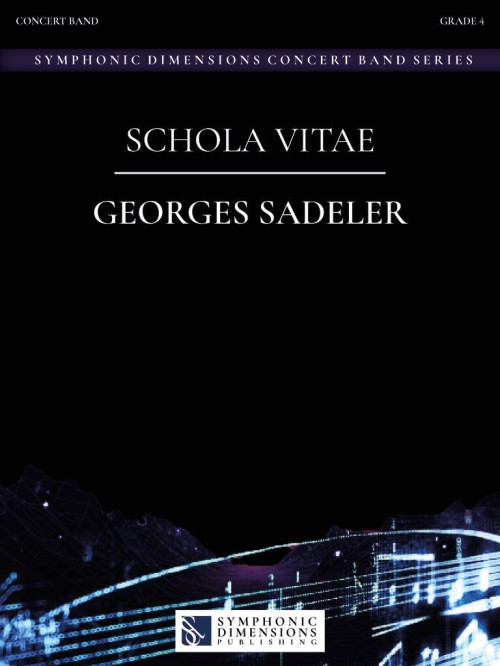 £139.99
£139.99Schola Vitae (Concert Band - Score and Parts) - Sadeler, Georges
Schola Vitae, dedicated to the former director of UGDA Music School in Luxembourg, Paul Scholer, describes in an 8-minute piece that learning and playing music is a school for life. Starting with popular scales that ascend and descend through various keys, an essential tool familiar to every musician appears: the metronome. It sets the tempo, and musicians practice their themes together or against each other, register by register. In music, however, it's not just about technique and precision, but also about emotions. Music connects people, fosters friendships, and accompanies them through the highs and lows of life. The sense of togetherness in music becomes increasingly audible. Everyone works together and pulls in the same direction to ultimately achieve something great.Georges Sadeler, born in 1988 is a Luxembourgish composer and saxophonist with the Grand Ducal Military Band of Luxembourg. His father kindled his interest in composing and arranging at an early age, a study he later continued under his two teachers Marco Ptz and Claude Lenners, both of whom taught at the Conservatoire of Music, Luxembourg. He gradually began to establish his own style, combining the enormous range of possibilities of contemporary music and classical music and, in the years that followed, he won six first prizes at various national and international composition competitions. His works have since been performed all over Europe.Duration: 8.00
Estimated dispatch 7-14 working days
-
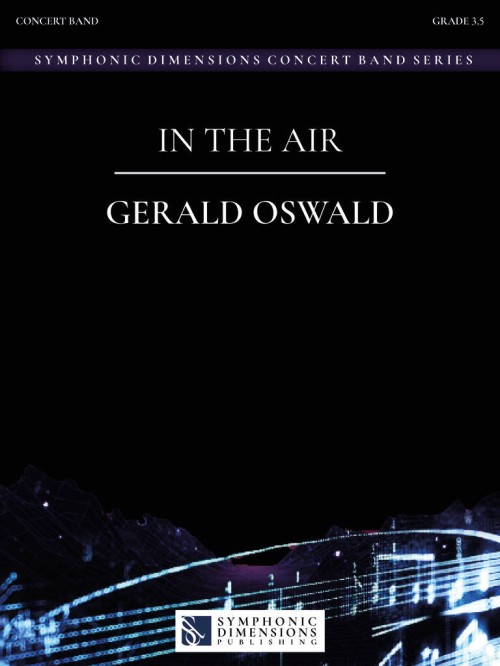 £139.99
£139.99In the Air (Concert Band - Score and Parts) - Oswald, Gerald
The composition is upbeat, dynamic, and the notes dance. There is no story to tell, but simply a mood of cheerfulness and levity. In the Air expresses a consistently joyful, light-hearted and positive vibe through its mischievously playful motifs; the music blows through as if a light breeze, a fresh wind. Gerald Oswald was born in 1968 in Gross-St. Florian. He completed his education as a trumpeter at the Johann-Joseph-Fux Conservatory and the University of Music and Performing Arts in Graz. He further pursued studies in conducting and composition under Franz Cibulka at the Johann-Joseph-Fux Conservatory in Graz, Thomas Doss at the Music and Arts Private University of Vienna, the Music School Leonding, and the C. Monteverdi Conservatory in Bolzano. His compositions for wind orchestras are successfully performed worldwide.Duration: 7.15
Estimated dispatch 7-14 working days
-
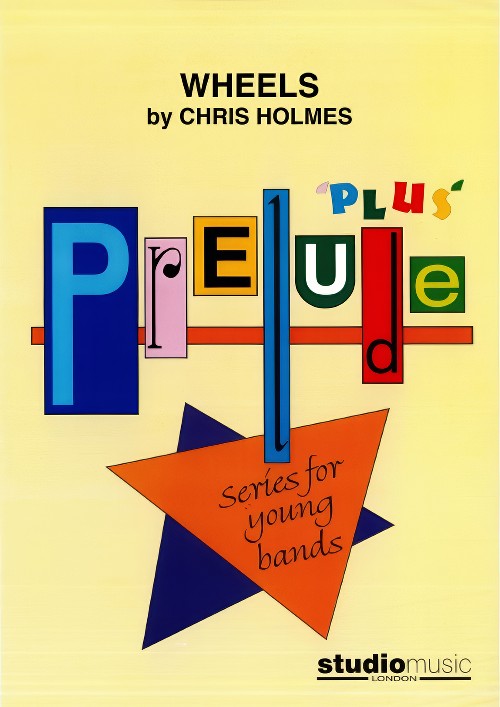 £59.95
£59.95Wheels (Concert Band - Score and Parts) - Holmes, Chris
A four movement work based on wheels! Includes:Big Dipper - the little carriage slowly climbs before hurtling off on its journey. Then another climb takes it even higher and off it goes again, even faster - the high woodwind instruments hint at the screams and shouts of the the passengers, before the carriage comes to a rest and everybody gives a sigh of relief.London Eye - the giant white wheel turns slowly and silently, taking the passengers high above London's River Thames, with views over the Houses of Parliament and the whole of the capital's skyline - breathtaking!Wagon Train - horses are pulling the heavy wooden wagons, slowly trundling across the American plains, taking the settlers to their new homes in the West.The No. 57 Bus - the bell sounds, and off the bus goes - the music changes when the bus comes to a stop to let passengers on and off - "ting ting" and off it goes again - another change in the music, another stop - a run home, and two final rings on the bell - a good trip!Duration: 9.00
Estimated dispatch 7-14 working days
-
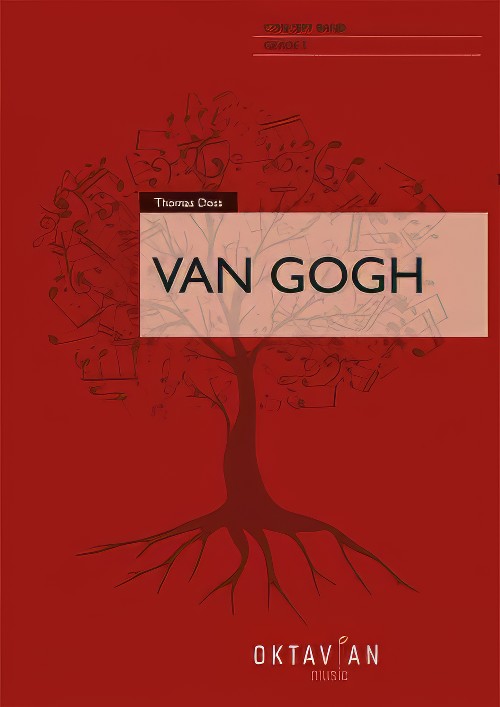 £279.99
£279.99Van Gogh (Concert Band - Score and Parts) - Doss, Thomas
This composition is not a work inspired by the life of the famous painter, but rather an attempt at a pictorial immersion into his world. In addition to Van Gogh's character and tragic life, the technique he employed to create his works, the bright colours of his paintings and his view of nature served as inspiration for this musical work. Point by point, stroke by stroke, Van Gogh brought his own world to life on canvas.On the life of Van Gogh: The Dutch artist Vincent van Gogh was one of the most important pioneers of Modernism, despite being relatively unknown during his own lifetime. As an artist, he chose a life of poverty and seclusion. From today's perspective, his important woks were created from 1880 onwards, when he had already more or less succumbed to madness. While his earlier works could still be classed as contemporary, he matured into a pioneer of Expressionism with his later work indicating an increasing self-awareness. He was just 37 years old when he died but he created over 750 paintings and 1600 drawings in the last ten years of his life.The structure of the work:Start: Brushes and Paints: Van Gogh retired to Arles in southern France where he found his artistic home. The colours and flowering gardens of this landscape awakened in him an unbelievably great creative power.A: A Picture Comes into Being: Van Gogh's psychotic episodes and bouts of depression did not stop him from painting wonderful pictures. Hardly anyone recognised his genius during his lifetime, on the contrary, he often felt misunderstood.C: Paris - Arles: In Paris (from 1886), Van Gogh became inspired by the French art scene. His works found few takers, however. He met and befriended the painter Paul Gauguin, but the lack of success made Van Gogh short tempered, and he began to drink. Eventually, he moved from Paris to Arles in the south of France to establish an artists' collective with Gaugin. Within a few weeks, the two got into such a violent argument that Van Gogh attacked his friend with a knife. The friends parted ways and afterwards Van Gogh cut off his right ear. In 1889 he voluntarily admitted himself into a mental hospital at St. Remy, suffering from hallucinations and fearing that he would lose his mind.G: The Starry Night One of his most famous paintings, created in 1898.H: Death and Brotherly Love Vincent van Gogh accepted an invitation to Auver-sur-Oise in 1890. This was one of his most intensive creative periods. He also went there for treatment, but his mental state hardly improved. After an extended walk, he injured himself fatally with a pistol under mysterious circumstances. Not even to his beloved brother Theo, who had supported him all his life, did he reveal on his deathbed how the accident had occurred.J: Art Market Today, Van Gogh's paintings are among the most expensive paintings on the art market. How ironic, given that he could hardly sell a painting during his lifetime. "I put my heart and soul into my work and lost my mind in the process." (Vincent van Gogh)Duration: 13.15
Estimated dispatch 7-14 working days
-
 £123.20
£123.203 Letzte Motetten (Concert Band - Score and Parts) - Bruckner, Anton - Doss, Thomas
Anton Bruckner (b. 4.9.1824, Ansfelden, d. 11.10.1896, Vienna) didn't have it easy. Throughout his life, the Austrian composer was plagued by self-doubt. Anton Bruckner came from a simple, rural background. After the death of his father, he was accepted as a choirboy at the monastery of Sankt Florian in 1837. After several years as a school assistant and his own organ and piano studies, he first worked as organist in St. Florian, then from 1855 as cathedral organist in Linz. Introduced to music theory and instrumentation by Simon Sechter and Otto Kitzler, he discovered Richard Wagner as an artistic role model, whom he admired throughout his life and also visited several times in Bayreuth. In 1868 Anton Bruckner became professor of basso continuo, counterpoint and organ at the Vienna Conservatory; ten years later court organist; and in 1891 finally honorary doctor of the University of Vienna. He was considered an important organ virtuoso of his era, but had to wait a long time for recognition as a composer. It was not until Symphony No.7 in E major, composed between 1881 and 1883, with the famous Adagio written under the effects of Wagner's death, that he achieved the recognition he had hoped for, even if he was reluctant to accept it given his inclination towards scepticism and self-criticism. Anton Bruckner was a loner who did not want to follow a particular school or doctrine. He composed numerous sacred vocal works, such as his three masses, the Missa Solemnis in B flat minor (1854), the Te Deum (1881-84) and numerous motets. As a symphonic composer, he wrote a total of nine symphonies and many symphonic studies from 1863 onwards, tending to revise completed versions several times over. Bruckner's orchestral works were long considered unplayable, but in fact were merely exceptionally bold for the tonal language of their time, uniting traditions from Beethoven through Wagner to folk music, on the threshold between late Romanticism and Modernism. Anton Bruckner composed about 40 motets during his lifetime, the earliest a setting of Pange lingua around 1835, and the last, Vexilla regis, in 1892. Thomas Doss has compiled some of these motets in this volume for symphonic wind orchestra. These motets show many characteristics of personal expression, especially Bruckner's colourful harmony in the earlier works, which is in places aligned with Franz Schubert (changes between major and minor; and movements in thirds). Later works are characterised by many components which, in addition to the expanded stature of the movements, include above all a sense of the instrumentation as an outward phenomenon and the harmony as a compositional feature that works more internally. Some aspects of Bruckner's work are the result of his long period of study, which familiarised him not only with the tradition of his craft, but also gave him insights into the "modernity" of his time in such composers as Wagner, Liszt and Berlioz. From this developed his personal standpoint, which always pursues the connection between the old and the new.Duration: 14.00
Estimated dispatch 7-14 working days
-
 £95.99
£95.995 Tantum Ergo (Concert Band - Score and Parts) - Bruckner, Anton - Doss, Thomas
Anton Bruckner (b. 4.9.1824, Ansfelden, d. 11.10.1896, Vienna) didn't have it easy. Throughout his life, the Austrian composer was plagued by self-doubt. Anton Bruckner came from a simple, rural background. After the death of his father, he was accepted as a choirboy at the monastery of Sankt Florian in 1837. After several years as a school assistant and his own organ and piano studies, he first worked as organist in St. Florian, then from 1855 as cathedral organist in Linz. Introduced to music theory and instrumentation by Simon Sechter and Otto Kitzler, he discovered Richard Wagner as an artistic role model, whom he admired throughout his life and also visited several times in Bayreuth. In 1868 Anton Bruckner became professor of basso continuo, counterpoint and organ at the Vienna Conservatory; ten years later court organist; and in 1891 finally honorary doctor of the University of Vienna. He was considered an important organ virtuoso of his era, but had to wait a long time for recognition as a composer. It was not until Symphony No.7 in E major, composed between 1881 and 1883, with the famous Adagio written under the effects of Wagner's death, that he achieved the recognition he had hoped for, even if he was reluctant to accept it given his inclination towards scepticism and self-criticism. Anton Bruckner was a loner who did not want to follow a particular school or doctrine. He composed numerous sacred vocal works, such as his three masses, the Missa Solemnis in B flat minor (1854), the Te Deum (1881-84) and numerous motets. As a symphonic composer, he wrote a total of nine symphonies and many symphonic studies from 1863 onwards, tending to revise completed versions several times over. Bruckner's orchestral works were long considered unplayable, but in fact were merely exceptionally bold for the tonal language of their time, uniting traditions from Beethoven through Wagner to folk music, on the threshold between late Romanticism and Modernism. Hymns for four-part mixed choir a cappella (1846, St. Florian) No. 1 in E flat major (WAB 41/3): Quite Slow No. 2 in C major (WAB 41/4): Andante No. 3 in B flat major (WAB 41/1): Slow No. 4 in A flat major (WAB 41/2): Slow Hymn for five-part (SSATB) mixed choir and organ No. 5 in D major: Solemnly They are simple works, completely subordinate to their liturgical use, which nevertheless already show numerous characteristics of personal expression. These small pieces were able to stand up to the harsh scrutiny of the mature master: in 1888, Bruckner subjected them to a revision in which he made only minor corrections.Duration: 11.00
Estimated dispatch 7-14 working days
